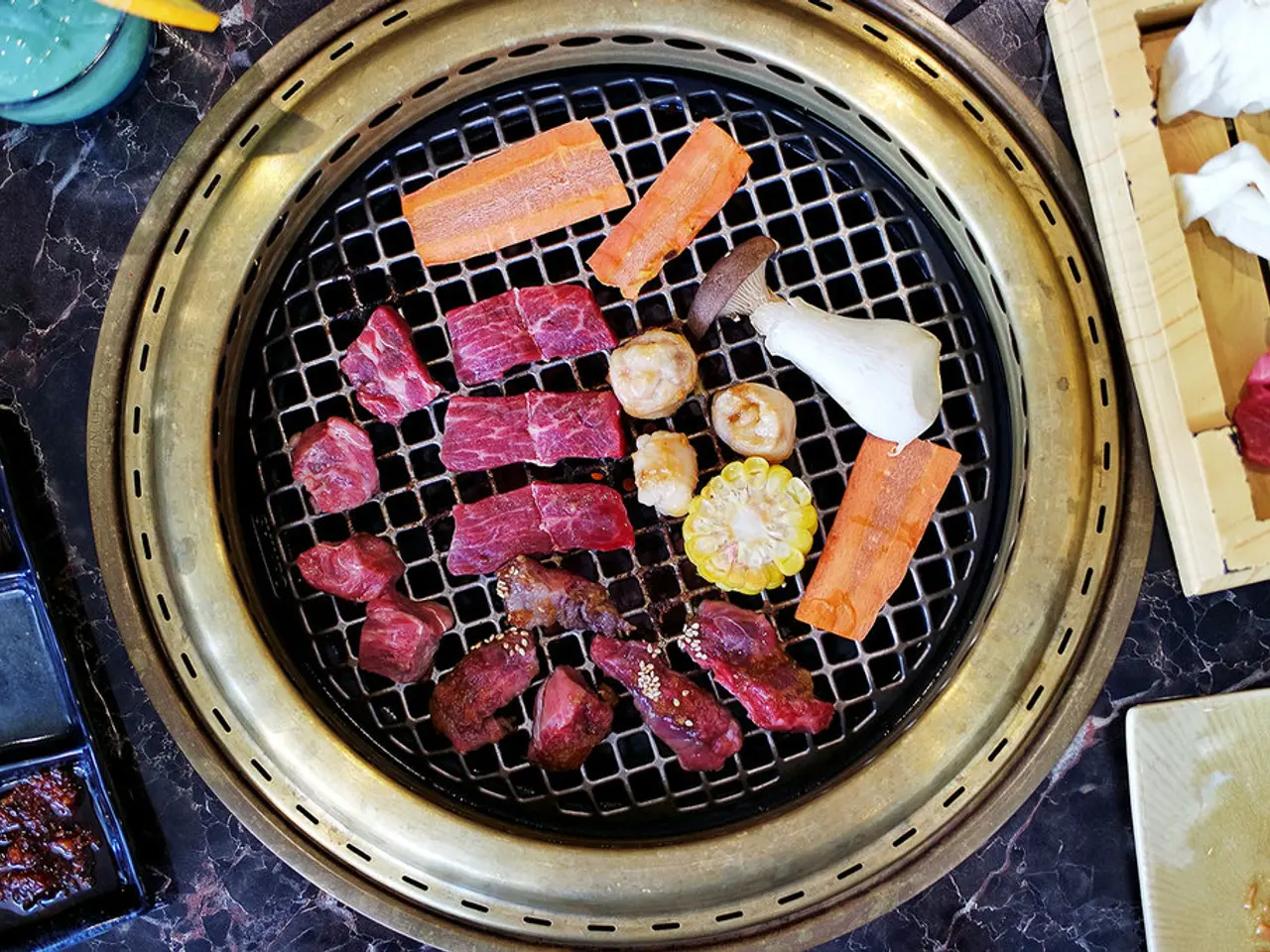Timeless Culinary Delights of Argentina - Savoring Rich Flavors and Historical Roots
Argentina, known for its vibrant culture and stunning landscapes, boasts a diverse and flavourful food scene that reflects its rich history and geographical diversity. From the heart of Buenos Aires to the remote corners of Patagonia, Argentine cuisine is a blend of indigenous ingredients, Spanish and Italian immigrant traditions, and the country's renowned cattle industry.
At the heart of Argentine sweets lies Dulce de leche, a thick caramel spread that is the soul of Argentine desserts. This sweet milk caramel is used as a spread or in desserts, and is a key ingredient in Alfajores, buttery biscuit sandwiches filled with dulce de leche and sometimes coated with chocolate or powdered sugar. Torta rogel, a cake with layers of dulce de leche and meringue, is another sweet treat not to be missed.
Argentine food culture is centred around the sacred barbecue ritual known as Asado. This involves grilling various cuts of beef (such as tira de asado, vacío, bife de chorizo, entraña) over low, steady heat, often accompanied by chorizo, morcilla (blood sausage), and sweetbreads. The asado is not just a meal but a social event, with minimal seasoning beyond salt or chimichurri, a sauce made of parsley, oregano, garlic, lemon, and chili.
Empanadas, savory stuffed pastries, are popular throughout Argentina and enjoyed as snacks or light meals. Empanadas are often filled with beef, onions, spices, and sometimes olives or boiled eggs. Each region has its unique spin on the dish, making it a regional specialty.
Milanesa, thin slices of beef or chicken, breadcrumbed and fried, is another popular dish. The Milanesa Napolitana variant is topped with tomato sauce, ham, and cheese, reminiscent of an Italian chicken parmigiana, and usually served with French fries. Provoleta, an Argentinian cheese dish featuring slices of provolone cheese spiced with oregano and chili, baked until melted and caramelized, then drizzled with olive oil and chimichurri, is a must-try.
Choripán, a simple but popular street food made of chorizo sausage served in a crusty bread bun, often accompanied by chimichurri, is a staple of Argentine street food. Carbonada Criolla, a hearty traditional Argentine stew from the northwest and Patagonia, made with beef, squash, corn, and potatoes, is another regional specialty.
Roasted Patagonian lamb, seasoned with local herbs, is a standout dish from the south. Food is a central part of social gatherings and shared traditions in Argentina, and the use of chimichurri, the social ritual of asado, and the prominence of beef and cheese are key unique characteristics of Argentinian cuisine.
In addition to these dishes, Argentina offers a variety of other culinary delights. Humita, a corn-based specialty from northern Argentina, and Humitas, sweet and popular in the north, are must-tries. Matambre arrollado, a stuffed flank steak, and Revuelto gramajo, a quick scramble of eggs, ham, and potatoes, are also worth trying.
Mate, a traditional drink made from yerba mate leaves, steeped in hot water, and served in a hollowed-out gourd, is a refreshing beverage that is a staple in Argentine social gatherings. Café con leche, a popular sweet, creamy coffee drink in Argentina, is another beverage to try.
Argentine cuisine is a testament to the country's diverse cultural influences and local ingredients, offering a unique and flavourful dining experience that is not to be missed. Whether you're enjoying a leisurely asado or sampling a sweet Alfajor, Argentine cuisine is sure to leave a lasting impression.
Delving deeper into Argentine cuisine, cultural travelers often indulge in cooking workshops to learn the art of making traditional dishes like Alfajores, a sweet treat made from Dulce de leche. Traveling food enthusiasts appreciate the blend of indigenous ingredients, Spanish and Italian traditions, and local cultural practices in Argentine cooking.
Furthermore, Argentine food-and-drink culture is not confined to the kitchen but is also deeply embedded in social lifestyles. Savoring a Carbonada Criolla stew or partaking in a communal asado is as much about sharing stories and creating memories as it is about enjoying the flavors of Argentine cuisine.




